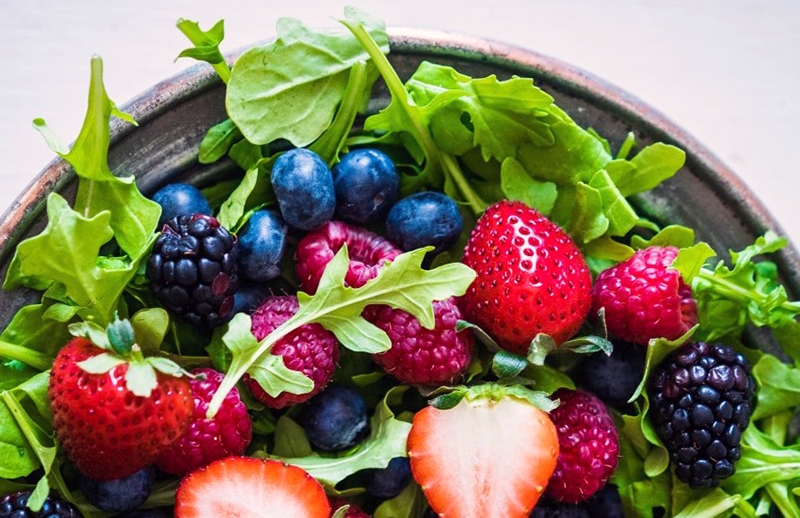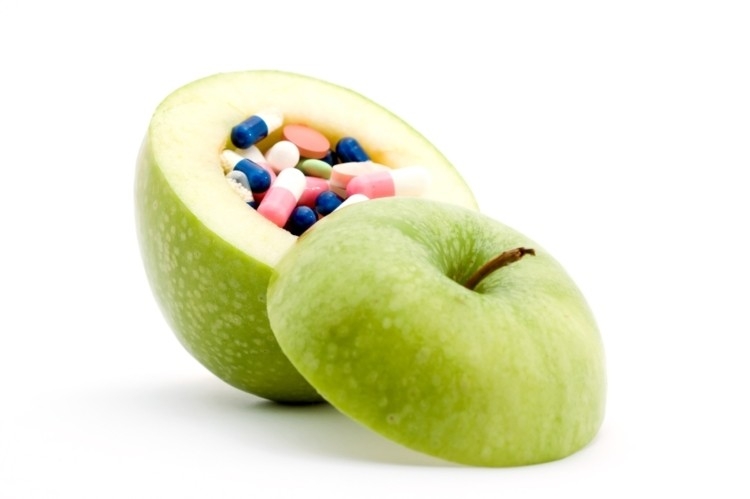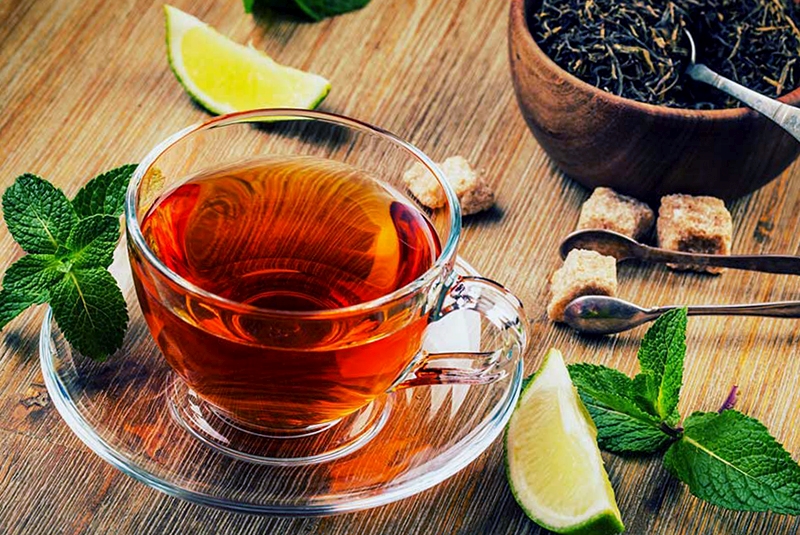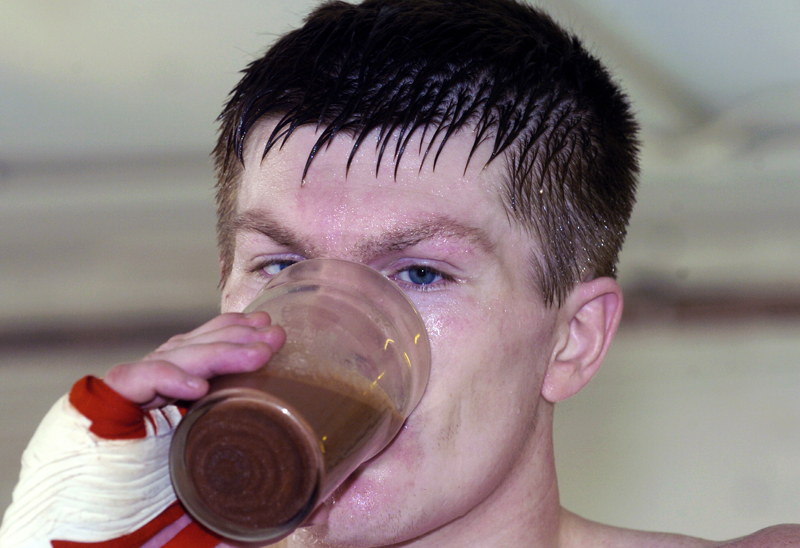You are viewing 1 of your 1 free articles. For unlimited access take a risk-free trial
Dark chocolate: good news for athletes and chocaholics

Andrew Hamilton explains why athletes and fitness enthusiasts with a penchant for dark chocolate have nothing to fear, and plenty to gain...
Christmas is a time to relax and indulge a little in festive treats. But in today’s health-conscious society, where we are constantly bombarded with healthy-eating messages, it’s also a time when many people suffer from guilt about their indulgences. For athletes in particular, there’s also the worry that a combination of reduced training volumes and richer food will lead to excess pounds, and a harder slog when proper training is resumed.Drink of the gods
Putting aside the psychology of healthy eating (which should allow for some ‘naughty treats’ now and again), it turns out that things might not be that bad after all. That’s because recent research has established that some treats can actually be rather good for your health and performance. Enter the humble cocoa bean, whose health benefits have long been recognised. The ancient Incas called cocoa ‘the drink of the Gods’ and evidence suggests that Aztec Emperor Montezuma drank cocoa in large quantities, describing it as the ‘divine drink, which builds up resistance and fights fatigue’. But as modern science is revealing, cocoa’s health-giving reputation is not without foundation.For example, clinical studies on the Kuna – an indigenous people in Central America who consume large amounts of cocoa with a high salt content – demonstrate that they have low blood pressure and don’t experience the age-related decrease in kidney function that causes increases in blood pressure. Additionally, death rates from cardiovascular disease are significantly lower compared to other populations in that part of the world. More generally, modern science has revealed that cocoa is an incredibly rich source of powerful antioxidants such as flavanols, which are known to provide beneficial health effects (see table 1).
Table 1: Oxygen Radical Absorbance Capacity (ORAC) units for various fruits and vegetables*

Higher ORAC scores indicate more powerful antioxidant capacity, with 70% cocoa solid chocolate being one of the very best foods in this respect!
Real chocolate
Before we discuss the health benefits of chocolate, let’s explain what we mean by real chocolate, and why you should choose real chocolate over many of the other so-called chocolate products out there. The key to healthy chocolate is the cocoa bean, which is used to make both milk and dark chocolate. Cocoa is a very rich source of flavan-3-ols, epicatechins and procyanidins, which act as antioxidants in the body. It follows that the higher the proportion of cocoa in the chocolate, the higher the amount of flavanols present in the chocolate.Dark chocolate contains a small amount of sugar and vanilla along with cocoa liquor, cocoa butter and cocoa powder (collectively termed ‘cocoa solids’). For example, 100g of 70% cocoa-solid chocolate contains 70g of cocoa solids and around 30% sugar. A 100g bar of 85% cocoa-solid chocolate contains 85g of cocoa solids and just 15g of sugar. These types of chocolate contain high levels of antioxidants (a good thing) and relatively low levels of sugar (also a good thing).
Milk chocolate also contains cocoa solids, but unlike dark chocolate, contains added milk and quite a bit more sugar than dark. For example, a 100g bar of the nation’s most popular milk chocolate contains just 26g of cocoa solids and 55g of sugar. Although milk chocolate contains some flavanols therefore, the levels are much lower than in high-cocoa solid dark chocolate. To make matters worse, evidence suggests that the milk in milk chocolate can bind to the flavanol antioxidants, which makes them less available to the body – explaining why you should always choose dark chocolate over milk! Needless to say, white chocolate is a pale imitation (no pun intended!) of real chocolate, containing almost no antioxidants yet stuffed with sugar and fat – the worst of all worlds!
Health benefits of dark chocolate
Scientists are in little doubt as to the potential health benefits of 70%+ cocoa solid chocolate. A fairly recent scientific review paper gathered together the findings from a number of previous studies into cocoa and health and concluded the following(1):- Dark chocolate consumption can improve blood flow through the tiny capillaries in the body (endothelial blood flow), leading to a reduction in blood pressure.
- Regular consumption of dark chocolate is associated with reduced risk of coronary artery disease and heart failure – most likely because the compounds in cocoa make blood less ‘sticky’ and help reduce the build up of arterial plaque. The lower risk of stroke is also attributed to these same compounds.
- Dark chocolate consumption may help reduce the risk of diabetes by improving insulin sensitivity and may also help reduce levels of proteins in the body associated with inflammation.
Dark chocolate may offer a performance benefit too. Just as nitrate supplementation (eg beetroot juice) can increase muscle blood flow and enhance endurance, so it seems can cocoa flavanols. When researchers compared the increase in blood flow after consuming nitrate or cocoa flavanols, they found the cocoa supplement was equally as effective as nitrate(2). Even better, combining nitrate and cocoa flavanols produced an additive effect, with the cocoa enhancing the activity of nitrate, further enhancing blood flow.
Using chocolate
If you’re already a dark chocolate fan, you don’t need to worry about recipes – just enjoy eating a little bit (around 20g or so – that’s 2 large squares of a 100g bar) everyday! As mentioned about, 70% or more cocoa solids is recommended and 85% is even better as there’s more cocoa and less sugar. More than this however (ie 90% and above) and the chocolate starts to become quite bitter. As we saw above, it’s best if you don’t consume dark chocolate with milk or milk products as they will reduce the absorption of the healthy flavanols!If you’re a milk chocolate fan, you’ll be used to much higher levels of sweetness. A good idea is to try consuming some 50% cocoa solid dark chocolate; once your taste buds adapt, try moving up to 60% then 70%. And in case you’re worried, unlike sugary milk chocolate, you’ll soon discover that a couple of squares or so of dark, high cocoa solid chocolate is very satisfying!
If you fancy something a bit less ‘cocoay’, try some chocolate cornflake crunchies. Melt a bar of 70% cocoa solid chocolate in a bowl (over a steaming saucepan). Once it’s fully melted, turn in some cornflakes until all the cornflakes are chocolate coated and there’s no runny chocolate in the bottom of the bowl. Stir in a few raisins then scoop the mixture out, place into paper cup cake cases and place in the fridge until the chocolate cornflake crunchies have set. These make a great post-exercise snack!
References
- Arch Turk Soc Cardiol 2015;43(2):199-207
- Free Radic Biol Med. 2014 Dec 18. pii: S0891-5849(14)01406-3
Newsletter Sign Up
Testimonials
Dr. Alexandra Fandetti-Robin, Back & Body Chiropractic
Elspeth Cowell MSCh DpodM SRCh HCPC reg
William Hunter, Nuffield Health
Newsletter Sign Up
Coaches Testimonials
Dr. Alexandra Fandetti-Robin, Back & Body Chiropractic
Elspeth Cowell MSCh DpodM SRCh HCPC reg
William Hunter, Nuffield Health
Keep up with latest sports science research and apply it to maximize performance
Today you have the chance to join a group of athletes, and sports coaches/trainers who all have something special in common...
They use the latest research to improve performance for themselves and their clients - both athletes and sports teams - with help from global specialists in the fields of sports science, sports medicine and sports psychology.
They do this by reading Sports Performance Bulletin, an easy-to-digest but serious-minded journal dedicated to high performance sports. SPB offers a wealth of information and insight into the latest research, in an easily-accessible and understood format, along with a wealth of practical recommendations.
*includes 3 coaching manuals
Get Inspired
All the latest techniques and approaches
Sports Performance Bulletin helps dedicated endurance athletes improve their performance. Sense-checking the latest sports science research, and sourcing evidence and case studies to support findings, Sports Performance Bulletin turns proven insights into easily digestible practical advice. Supporting athletes, coaches and professionals who wish to ensure their guidance and programmes are kept right up to date and based on credible science.













